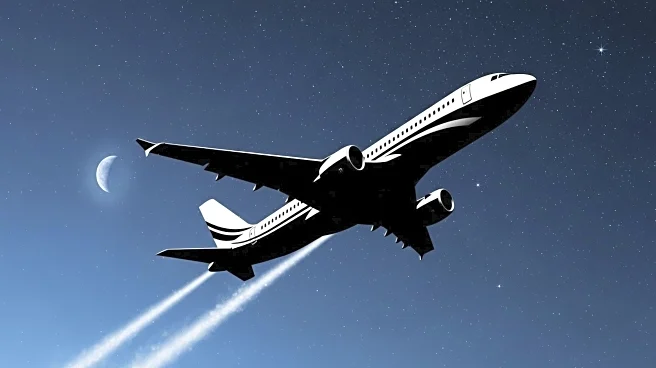What is the story about?
What's Happening?
China Eastern Airlines has announced a new flight route connecting Shanghai and Buenos Aires, which the airline claims to be the 'world's longest direct flight.' The journey, departing from Shanghai's Pudong International Airport, is scheduled to take approximately 25.5 hours to reach Ministro Pistarini International Airport in Buenos Aires. The return flight is expected to last 29 hours. However, the flight includes a two-hour stop in Auckland, New Zealand, allowing passengers to disembark for a break, making it a direct but not nonstop service. The route will be operated biweekly using a Boeing 777-300ER, starting December 4. This new route is part of China Eastern's strategy to establish an 'Air Silk Road' between the Asia-Pacific region and South America.
Why It's Important?
The introduction of this long-haul flight by China Eastern Airlines signifies a strategic move to enhance connectivity between Asia and South America, potentially boosting trade and tourism between the two regions. The route could offer a more efficient travel option compared to existing flights, which often require longer layovers. This development may also intensify competition among airlines vying for the title of the longest flight, as carriers like Qantas are also exploring ultra-long-haul routes. For passengers, the new route offers a unique travel experience, though the extended flight duration may pose challenges in terms of comfort and convenience.
What's Next?
As the new route launches, China Eastern Airlines will likely monitor passenger feedback and operational efficiency to assess the viability of the service. The airline may consider adjustments based on demand and competition. Other airlines might respond by enhancing their own long-haul offerings or exploring new routes. Additionally, the success of this route could influence future aviation strategies, encouraging more airlines to explore direct connections between distant global cities.
Beyond the Headlines
The introduction of such a long flight raises questions about the environmental impact of ultra-long-haul travel, as well as the potential for technological advancements in aircraft design to improve fuel efficiency and passenger comfort. The route's proximity to remote areas and Antarctica also highlights the need for robust safety measures and contingency planning.
AI Generated Content
Do you find this article useful?















